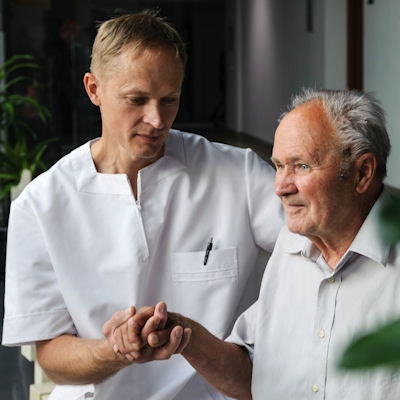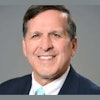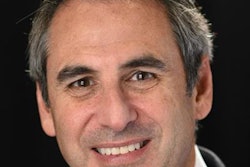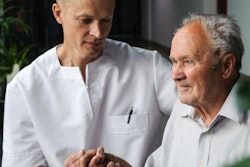
Teledentistry has been suggested as a way to meet currently unmet dental needs of elderly residents in long-term care facilities. But how good is the current technology, and is it ready for its close-up?
The researchers of a new study wanted to see if teledentistry were as effective as face-to-face examinations for these patients. They found that this technology can be useful, particularly for diagnosing pathology, and may also allow for more regular checkups (Journal of the American Medical Directors Association, February 21, 2017).
"In addition to improving awareness among geriatricians, dentists, and primary care providers, the medical community as a whole must collaborate with the dental care community to develop teledentistry programs tailored toward older adults ... [allowing] more regular checkups of frail and dependent people," wrote the study authors, led by Alain Queyroux, MD, a physician and a dental surgeon at Guéret Hospital in Guéret, France.
Head-to-head comparison
Poor oral health is common among nursing home residents and can lower their quality of life. Approximately 72% of aging U.S. adults are dentate with more than 18 natural teeth, and they are at increased risk for periodontal and dental diseases, as well as diseases of the soft tissues and palate, the authors wrote. Studies have found that elderly people with dental problems are at risk for weight loss and problems with chewing and communication, and they are also at increased risk for systemic illnesses, such as diabetes, ischemic heart disease, and chronic respiratory disease.
“The medical community as a whole must collaborate with the dental care community to develop teledentistry programs tailored toward older adults.”
Meanwhile, teledentistry has made remote patient management and the sharing of digital dentistry information possible. It allows rapid and documented remote consultations, as well as the possibility of simultaneous communication among multiple people, the authors noted.
The current study compared the accuracy of teledentistry with face-to-face exams for diagnosing dental pathology, assessing the rehabilitation status of dental prostheses, and evaluating the chewing ability of more than 230 older adults living in eight nursing homes in France and Germany.
The study participants all had oral or dental complaints self-reported or reported by caregivers and were willing to receive oral or dental preventive care. Their mean age was 84.4 ± 8.3 years. Each patient served as his or her own control.
Patients were examined in a room in their nursing home used for medical care. A dental assistant recorded video of each patient's oral cavities using a Tele Pack X endoscope (Karl Storz) with a cold light source and an integrated camera and digital video recorder.
A dental surgeon assessed each video remotely, checking for pathologies and assessing chewing ability and rehabilitation status of dental prostheses. The presence of gingival inflammation or alveolar mucosa inflammation were secondary outcomes. Within seven days, the same practitioner examined the patient in person and used the Silness-Löe and the Greene and Vermillion dental hygiene assessment indexes to make a new diagnosis.
Among the study cohort, 136 patients (69.4%) were classified as totally or partially dependent for activities of daily living, 114 (48.5%) had hypertension, and 73 (31.0%) had neurodegenerative diseases. Assistance with eating was eating was required by 31 (13.2%) of them. Just over half could not be examined in a dental surgery room because of their dependent status and were instead examined in their nursing home room. More than half (55.4%) of the patients had dental pathology.
During the video recording, more than 80% of the patients were assisted by another person. The teledentistry system was rated as acceptable by 224 (95.3%) of the patients or their family members.
The sensitivity of teledentistry for diagnosing dental pathology was 93.8% and the specificity was 94.2%, the study authors reported. Sensitivity is the ability of a test to correctly categorize a patient as having a disease or condition, in this case dental pathology. Specificity means a test correctly identifies an individual as not having the condition or disease.
Additionally, the sensitivity of teledentistry for assessing chewing ability was 85.0% and specificity was 82.8%, while the sensitivity for assessing the rehabilitation status of dental prostheses was 87.8% and specificity was 90.3%.
Teledentistry had excellent sensitivities and specificities for diagnosing dental pathologies and good accuracy for assessing the rehabilitation of dental prostheses and chewing ability among elderly nursing home residents, the authors noted.
"Our teledentistry method was quicker than face-to-face examinations (12 minutes compared with 20 minutes), and standard, dental surgeon-led examinations were not superior in terms of overall sensitivity for diagnosing dental pathologies," the authors wrote. "For assessing gingival and alveolar mucosa inflammation, chewing ability, and the rehabilitation status of dental prostheses, the results of our teledentistry method approached those of classic methods. The video recordings used in our method were high-definition, with excellent stability, color, framing, and coverage properties."
Dependence limited study
The authors acknowledged the study limitation that not all patients were able to be examined in a dental clinic or department because of their dependent status.
They also noted that the overall oral health status of the study participants was poor, regardless of their medical diagnosis.
"The study was the first to evaluate the diagnostic accuracy of teledentistry, which could be widely used for preventing and detecting dental abnormalities among elderly nursing home residents," the authors concluded. "Our results highlight the fact that dental pathology is a major determinant of denutrition and accelerated cognitive decline in elderly people."


















